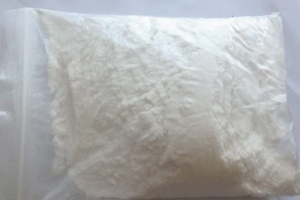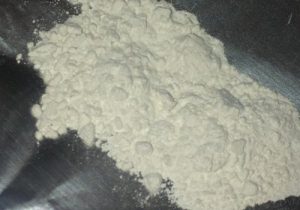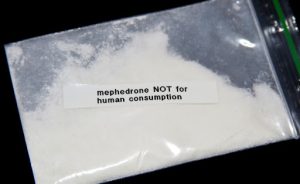Fentanyl Powder vs Mephedrone Powder: Origins, Specifications, and Effects
Introduction : Fentanyl Powder vs Mephedrone Powder
In the ever-evolving world of synthetic drugs, fentanyl and mephedrone have carved out very different reputations. Despite both often appearing in powdered form and influencing global discussions about drug policy, health risks, and public safety, they are vastly different substances in their origins, chemical specifications, and physiological effects. This article delves deep into comparing fentanyl powder and mephedrone powder, highlighting their development, their chemical and physical profiles, and the distinct impacts they have on the human body.
Origins
Fentanyl: A Pharmaceutical Breakthrough Turned Global Threat
Fentanyl’s story begins in 1960 when it was first synthesized by Paul Janssen, the founder of Janssen Pharmaceutica. Created as part of an effort to develop potent analgesics that would act quickly and effectively, fentanyl was initially intended for use in surgical anesthesia and pain management. Its potency — approximately 50 to 100 times stronger than morphine — made it a highly effective tool in medicine when used correctly.
By the late 20th century, fentanyl derivatives began appearing outside of clinical settings, leading to widespread illicit production, especially in clandestine labs in China and Mexico. These unauthorized versions, often found as powder or pressed into counterfeit pills, significantly contributed to the opioid crisis, particularly in North America.
Mephedrone: The “Legal High” of the 2000s
Mephedrone (4-methylmethcathinone, or 4-MMC) has a different history. It was first synthesized in 1929, but its recreational use only exploded in the early 2000s. Originally rediscovered and modified by underground chemists looking to exploit legal loopholes, mephedrone became a popular “legal high” across Europe, especially the United Kingdom.
Marketed under names like “plant food” or “bath salts,” mephedrone powder was sold openly in head shops and online stores. Its stimulant and empathogenic effects made it a favorite at clubs and festivals until increasing reports of health risks prompted widespread bans around 2010–2011.
Specifications :
Fentanyl Powder
Chemical Structure:
-
Molecular Formula: C22H28N2O
-
IUPAC Name: N-phenyl-N-[1-(2-phenylethyl)piperidin-4-yl]propanamide
-
Classification: Synthetic opioid
Physical Characteristics:
-
Appearance: Fine white to off-white crystalline powder
-
Solubility: Highly soluble in lipids and moderately soluble in water
-
Stability: Stable under standard conditions but degrades with prolonged exposure to heat and light
Potency:
-
Extremely potent, with lethal doses often measured in micrograms.
-
Therapeutic doses are tiny compared to most other opioids.
Common Adulterants:
-
Heroin
-
Cocaine
-
Benzodiazepines
-
Other fentanyl analogues (e.g., carfentanil)
Mephedrone Powder
Chemical Structure:
-
Molecular Formula: C11H15NO
-
IUPAC Name: 2-methylamino-1-(4-methylphenyl)propan-1-one
-
Classification: Synthetic stimulant and empathogen
Physical Characteristics:
Appearance: White or yellowish crystalline powder
-
Solubility: Highly soluble in water
-
Stability: Relatively stable but sensitive to moisture and air
Potency:
-
Less potent than traditional amphetamines.
-
Active doses range from 100 to 300 milligrams.
Common Adulterants:
-
Caffeine
-
Other cathinones (e.g., methylone, butylone)
-
Inert fillers like sugars
Effects:
Fentanyl Powder
Mechanism of Action:
Fentanyl acts primarily on the μ-opioid receptors in the brain and spinal cord. Binding to these receptors dampens pain signals and produces feelings of euphoria, sedation, and respiratory depression.
Desired Effects:
-
Profound pain relief
-
Euphoria
-
Relaxation
Adverse Effects:
-
Respiratory depression (leading cause of overdose deaths)
-
Nausea and vomiting
-
Constipation
-
Confusion
-
Sedation
-
Tolerance and dependence
Overdose Symptoms:
-
Pinpoint pupils
-
Unconsciousness
-
Slow, shallow breathing or complete cessation of breathing
-
Cyanosis (bluish skin)
Risks and Challenges:
Because fentanyl is so potent, even a slight miscalculation in dosage can lead to fatal overdose. Its widespread adulteration in the illegal drug market exacerbates this danger, making it a leading cause of opioid-related deaths.
Mephedrone Powder
Mechanism of Action:
Mephedrone acts as a releasing agent for serotonin, dopamine, and norepinephrine, similar to MDMA and methamphetamine. This results in enhanced mood, increased sociability, and heightened sensory perception.
Desired Effects:
-
Euphoria
-
Increased energy
-
Elevated mood
-
Increased sociability
-
Enhanced tactile sensations
Adverse Effects:
-
Insomnia
-
Anxiety
-
Bruxism (teeth grinding)
-
Sweating
-
Increased heart rate and blood pressure
-
Agitation
Overdose Symptoms:
-
Severe agitation
-
Hallucinations
-
Seizures
-
Cardiovascular collapse
Risks and Challenges:
Mephedrone use is associated with binge behavior, where users continually re-dose over several hours or days to maintain the euphoric effects, increasing the risk of acute toxicity. Long-term use has been linked to potential neurotoxicity and psychological dependence.
Legal Status :
Fentanyl
Fentanyl is classified as a Schedule II controlled substance in the United States under the Controlled Substances Act. This means it has accepted medical uses but also a high potential for abuse. Many fentanyl analogues, however, are classified under Schedule I, having no accepted medical use and a high potential for abuse.
Globally, countries have cracked down on both medical and illicit fentanyl production, with China implementing stricter regulations on fentanyl-related substances in 2019 under U.S. pressure.
Mephedrone
Initially sold legally, mephedrone was quickly banned in many countries once its dangers became apparent. In 2010, the United Kingdom classified it as a Class B drug under the Misuse of Drugs Act. The United States considers it a Schedule I substance, meaning it has no accepted medical use and a high potential for abuse.
Across Europe, Asia, and Australia, mephedrone is heavily regulated or outright banned.
Conclusion :
While both fentanyl and mephedrone powders have left their mark on global drug culture, they represent two different crises. Fentanyl’s journey from legitimate medical marvel to public health catastrophe showcases the fine line between beneficial and deadly drugs. Mephedrone’s brief but explosive popularity highlighted the risks posed by designer drugs and the challenges of keeping legislation in step with chemical innovation.
Understanding their origins, chemical makeup, and effects provides valuable insight into why they are treated so differently by authorities and health professionals — and why the dangers they pose are taken so seriously. Whether dealing with the microscopic lethal doses of fentanyl or the binge-driven risks of mephedrone, education, harm reduction, and robust regulation remain key to mitigating their harm in society.




There are no reviews yet.